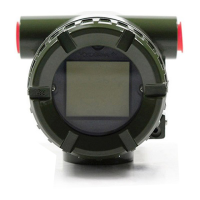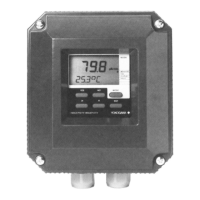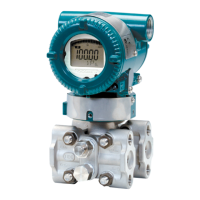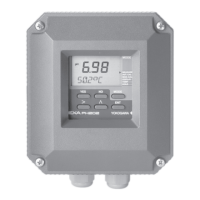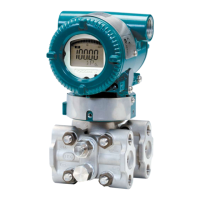<2. Notes on Handling>
2-24
IM 01C50G01-01EN
Control Drowing for FM (US) intrinsically safe approval/non-incendive approval
(4 - 20 mA & Fieldbus type)
Yokogawa Electric Corporation
Model
Title
Control Drawing
No.
Page
Revision
Date
Specific Conditions of Use:
–
Electrostatic charges on the non-metallic parts (excluding glass parts) or coated parts of
the Temperature Transmitter shall be avoided.
– When the enclosure of the Temperature Transmitter is made of aluminum alloy, if it is mounted in
Zone 0, it must be installed such that, even in the event of rare incidents, an ignition source due to
impact and/or friction sparks is excluded.
– The dielectric strength of 500 V r.m.s. between the intrinsically safe circuit and the enclosure of the
Temperature Transmitter is limited, only by the removable surge absorber F9220AR.
Notes:
1. No revision to this drawing without prior approval of FM.
2. Installation must be in accordance with the National Electric Code (NFPA70), ANSI/ISA-RP12.06.01,
and relevant local codes.
3. The Associated Apparatus must be FM-approved.
4. The following conditions must be satisfied for each circuit.
Voc (or Uo) ≤ Ui
Isc (or Io) ≤ Ii
Po ≤ Pi
Ca (or Co) ≥ Ci + Ccable
La (or Lo) ≥ Li + Lcable
5. Control equipment connected to the Associated Apparatus must not use or generate a voltage more
than Um of the Associated Apparatus.
6. The control drawing of the Associated Apparatus must be followed when installing the equipment.
7. In case Nonincendive Field Wiring Concept is used for the interconnection, FM-approved Associated
Nonincendive Field Wiring Apparatus, which meets the following conditions, must be used as the
Power Supply / Control Equipment.
Voc (or Uo) ≤ Ui
Ca (or Co) ≥ Ci + Ccable
La (or Lo) ≥ Li + Lcable
8. The surge absorber F9220AR can be removed from, or added to the equipment.
9. Dust-tight conduit seals must be used when installed in Class II or Class III environments.
10. FISCO/FNICO installation must be in accordance with ANSI/ISA-60079-25.
11. The terminator(s) must be FM approved.
12. WARNING –ELECTROSTATIC CHARGE MAY CAUSE AN EXPLOSION HAZARD. AVOID ANY
ACTIONS THAT CAUSE THE GENERATION OF ELECTROSTATIC CHARGE, SUCH AS
RUBBING WITH A DRY CLOTH ON COATING FACE OF THE PRODUCT.
13. WARNING – SUBSTITUTION OF COMPONENTS MAY IMPAIR INTRINSIC SAFETY AND
SUITABILITY FOR HAZARDOUS LOCATIONS
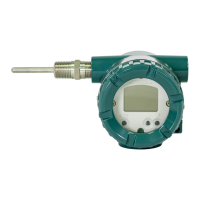
